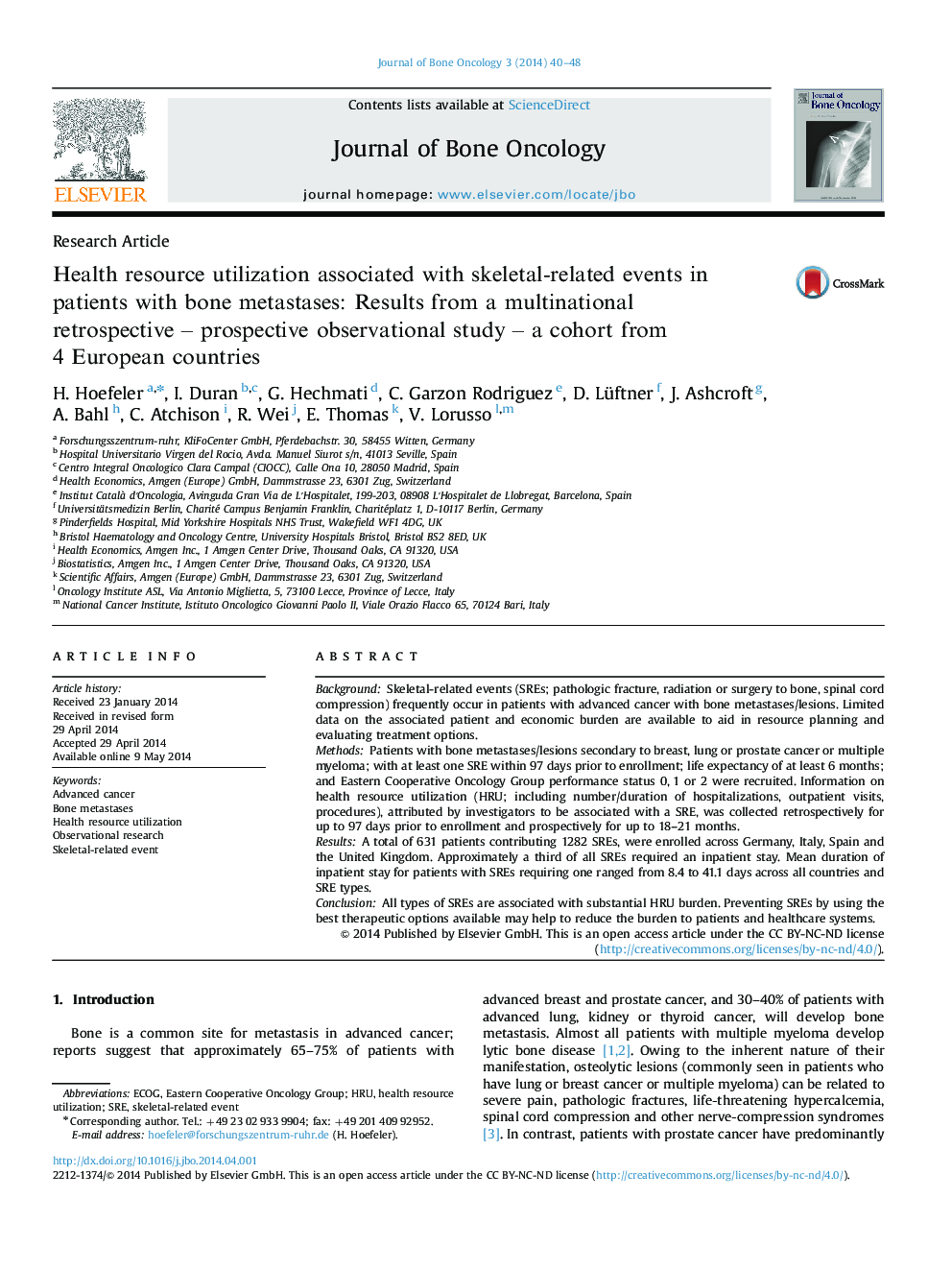| Article ID | Journal | Published Year | Pages | File Type |
|---|---|---|---|---|
| 2136205 | Journal of Bone Oncology | 2014 | 9 Pages |
•Patients with bone metastases frequently experience skeletal-related events (SREs).•We used prospective and retrospective data to examine health resource utilization.•All types of SREs required substantial resource use.•Therapies that prevent SREs could reduce the burden on healthcare systems.
BackgroundSkeletal-related events (SREs; pathologic fracture, radiation or surgery to bone, spinal cord compression) frequently occur in patients with advanced cancer with bone metastases/lesions. Limited data on the associated patient and economic burden are available to aid in resource planning and evaluating treatment options.MethodsPatients with bone metastases/lesions secondary to breast, lung or prostate cancer or multiple myeloma; with at least one SRE within 97 days prior to enrollment; life expectancy of at least 6 months; and Eastern Cooperative Oncology Group performance status 0, 1 or 2 were recruited. Information on health resource utilization (HRU; including number/duration of hospitalizations, outpatient visits, procedures), attributed by investigators to be associated with a SRE, was collected retrospectively for up to 97 days prior to enrollment and prospectively for up to 18–21 months.ResultsA total of 631 patients contributing 1282 SREs, were enrolled across Germany, Italy, Spain and the United Kingdom. Approximately a third of all SREs required an inpatient stay. Mean duration of inpatient stay for patients with SREs requiring one ranged from 8.4 to 41.1 days across all countries and SRE types.ConclusionAll types of SREs are associated with substantial HRU burden. Preventing SREs by using the best therapeutic options available may help to reduce the burden to patients and healthcare systems.
